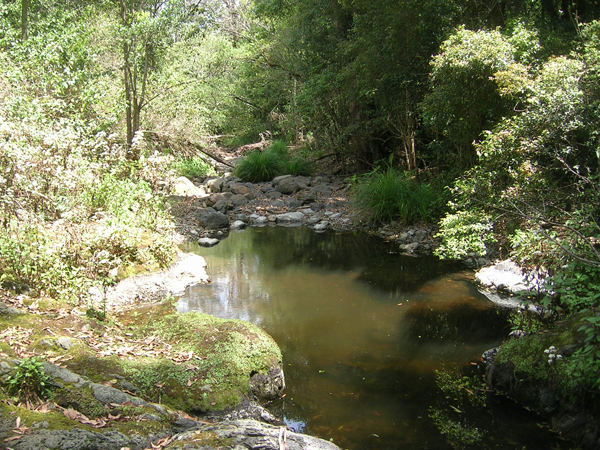Why linking biodiversity and spatial scale is key to managing environmental flows
Biodiversity is a term that gets used a lot when talking about environmental flows. Water managers and policy makers use biodiversity as a goal for action. But do we ever stop to ask exactly what biodiversity means, and how it can inform river management at various scales?
Research Fellow Dr Rob Rolls and team address this problem in a recent publication in Biological Reviews. Their study posits that clarifying how river flow and wetland water regimes affect biodiversity will help set clearer expectations about water management. In turn this needs to be coupled with a sense of spatial scale to set the basis for how we perceive, value, and measure biodiversity.

Headwater stream pool at Gap Creek. Photo by Roll Rolls
"By understanding the linkages between hydrology and biodiversity from small to large scales, we can make management decisions that match the scale of biodiversity response," says Dr Rolls. "This helps ensure we get the most out of environmental water allocations for achieving biodiversity conservation and enhancement."
Dr Rolls and colleagues synthesised a wealth of literature addressing the effect of hydrology on freshwater biodiversity from small to broad (i.e. local to global) spatial scales. The team were particularly interested in how key ecohydrological mechanisms influenced patterns of freshwater biodiversity.
The team found at local scales, locations that were increasingly connected by water typically had greater numbers of species than less frequently connected sites. Conversely, at larger scales, landscapes with low connectivity had greater species variety. This demonstrates that relationships between hydrology and freshwater biodiversity vary depending on what spatial scale ‘biodiversity’ is viewed in. Flooding, for example, can increase local-scale biodiversity but decrease landscape-scale biodiversity, while channel drying will briefly decrease local-scale biodiversity and increase landscape-scale biodiversity.
"This study is an important piece of work that links river flows to biodiversity across different spatial scales," says Dr Rolls. “Until now we have lacked a theoretical ecological basis for linking how river flows and wetland water regimes affect freshwater biodiversity across different spatial scales. Our study will help water managers and scientists better articulate the consequences and outcomes of managing water for biodiversity in rivers and floodplains.”
This study was published in Biological Reviews and conducted in collaboration with researchers from the University of New England, Finnish Environmental Institute, University of New South Wales, and Kansas State University.

